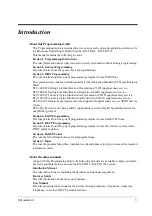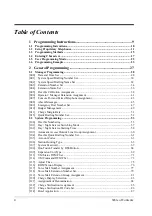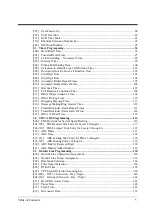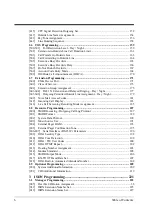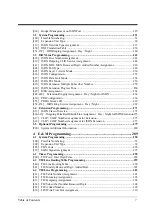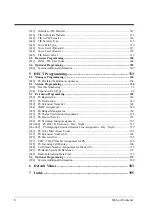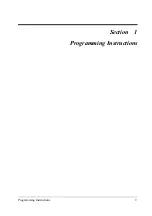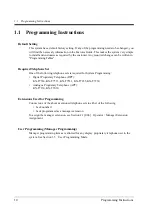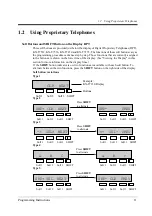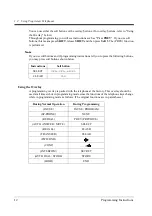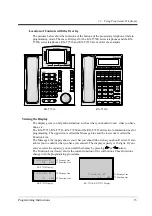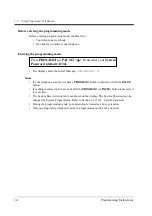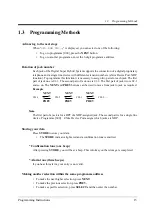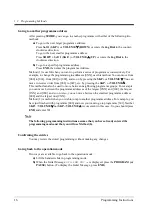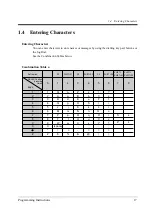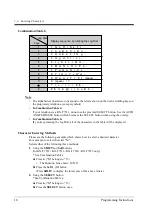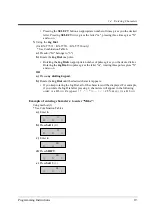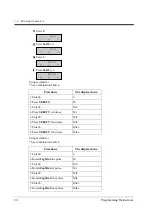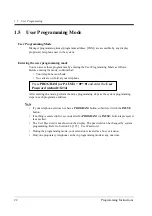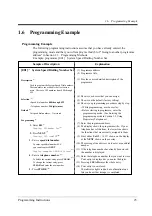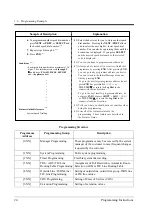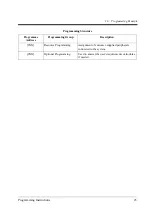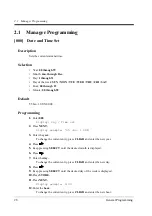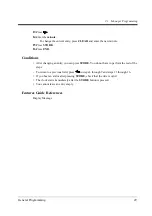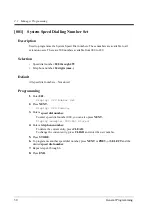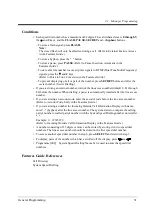
1.3
Programming Methods
16
Programming Instructions
Going to another programme address
After pressing STORE, you can go to another programme with either of the following two
methods:
a)
To go to the next larger programme address:
Press Soft 1 (SKP+) or VOLUME (DOWN) or rorate the Jog Dial in the counter-
clockwise direction.
To go to the next smaller programme address:
Press SHIFT + Soft 1 (SKP–) or VOLUME (UP) or rorate the Jog Dial in the
clockwise direction.
b)
To go to a specific programme address:
Press END, then enter the programme Address.
Method (1) is useful when you want to perform a series of programmes consecutively. For
example, to change the programming in addresses [0XX], use this method. You can move from
[000] to [001], from [001] to [002], and so on by pressing the SKP+ or VOLUME .
You
can
move in reverse order from [008] to [007], etc. by pressing the SKP– or VOLUME .
This method can also be used to move between neighboring programme groups: For example,
you can move between the programme addresses of the largest [0XX] and [100], the largest
[1XX] and [200], and so on. Also, you can move between the smallest programme address
[000] and the largest one [9XX].
Method (2) is useful when you wish to jump to another programme address. For example, you
have just finished with programme [006] and now you want to go to programme [301]. Neither
SKP+ / VOLUME nor SKP–/VOLUME is convenient in this case. So you should press
END and enter 301.
Note
The following programming instructions assume that you have already entered the
programming mode and that you will use Method (b).
Confirming the entries
You may review the stored programming without making any changes.
Going back to the operation mode
Two ways are available to go back to the operation mode:
a)
Lift the handset while in programming mode.
b)
When the Initial Message:
SYS-PGM NO?
is displayed, press the PROGRAM (or
PAUSE) button. (To display the Initial Message, press END.)
Summary of Contents for KX-TD1232JT
Page 2: ...2...
Page 9: ...Programming Instructions 9 Section 1 Programming Instructions...
Page 26: ...1 6 Programming Example 26 Programming Instructions...
Page 27: ...General Programming 27 Section 2 General Programming...
Page 48: ...2 1 Manager Programming 48 GeneralProgramming Features Guide References Emergency Call...
Page 62: ...2 2 System Programming 62 GeneralProgramming Features Guide References Quick Dialling...
Page 194: ...2 8 Resource Programming 194 GeneralProgramming Features Guide References Background Music BGM...
Page 221: ...ISDN Programming 221 Section 3 ISDN Programming...
Page 270: ...3 3 ISDN Line Programming 270 ISDN Programming Multiple Subscriber Numbers MSN Ringing Service...
Page 289: ...E M Programming 289 Section 4 E M Programming...
Page 304: ...4 4 TIE Line Programming 304 E M Programming Features Guide References E M TIE Line Service...
Page 307: ...4 4 TIE Line Programming E M Programming 307 Features Guide References E M TIE Line Service...
Page 311: ...4 4 TIE Line Programming E M Programming 311 Features Guide References E M TIE Line Service...
Page 332: ...4 6 Optional Programming 332 E M Programming...
Page 333: ...DECT Programming 333 Section 5 DECT Programming...
Page 356: ...5 3 Extension Programming 356 DECT Programming Extension Group...
Page 367: ...5 3 Extension Programming DECT Programming 367 Connected Line Identification Presentation COLP...
Page 383: ...Default Values 383 Section 6 Default Values...
Page 395: ...Index 395 Section 7 Index...
Page 401: ......


